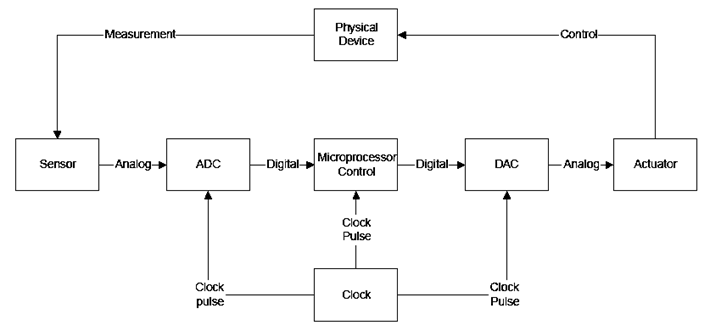SKEDSOFT
Introduction:
The purpose of this chapter is to introduce a number of topics dealing with a mechatronic system. This starts with an overview of mechatronic systems and a look at the input and output signals of a mechatronic system.
The Mechatronic System
A typical mechatronic system with mechanical, electrical, and computer components.
The process of system data acquisition begins with the measurement of a physical value by a sensor. The sensor is able to generate some form of signal, generally an analog signal in the form of a voltage level or waveform. This analog signal is sent to an analog-to-digital converter (ADC).
Commonly using a process of successive approximation, the ADC maps the analog input signal to a digital output. This digital value is composed of a set of binary values called bits (often represented by 0s and 1s). The set of bits represents a decimal or hexadecimal number that can be used by the microcontroller.
The microcontroller consists of a microprocessor plus memory and other attached devices. The program in the microprocessor uses this digital value along with other inputs and preloaded values called calibrations to determine output commands. Like the input to the microprocessor, these outputs are in digital form and can be represented by a set of bits.
A digital-to-analog converter (DAC) is then often used to convert the digital value into an analog signal.
The analog signal is used by an actuator to control a physical device or affect the physical environment. The sensor then takes new measurements and the process repeated, thus completing a feedback control loop. Timing for this entire operation is synchronized by the use of a clock.
A Home/Office Example
An example of a mechatronic system is the common heating/cooling system for homes and offices. Simple systems use a bimetal thermostat with contact points controlling a mercury switch that turns on and off the furnace or air conditioner.
A modern environmental control system uses these same basic components along with other components and computer program control.
A temperature sensor monitors the physical environment and produces a voltage level as demonstrated (though generally not nearly such a smooth function). After conversion by the ADC, the microcontroller uses the digitized temperature
